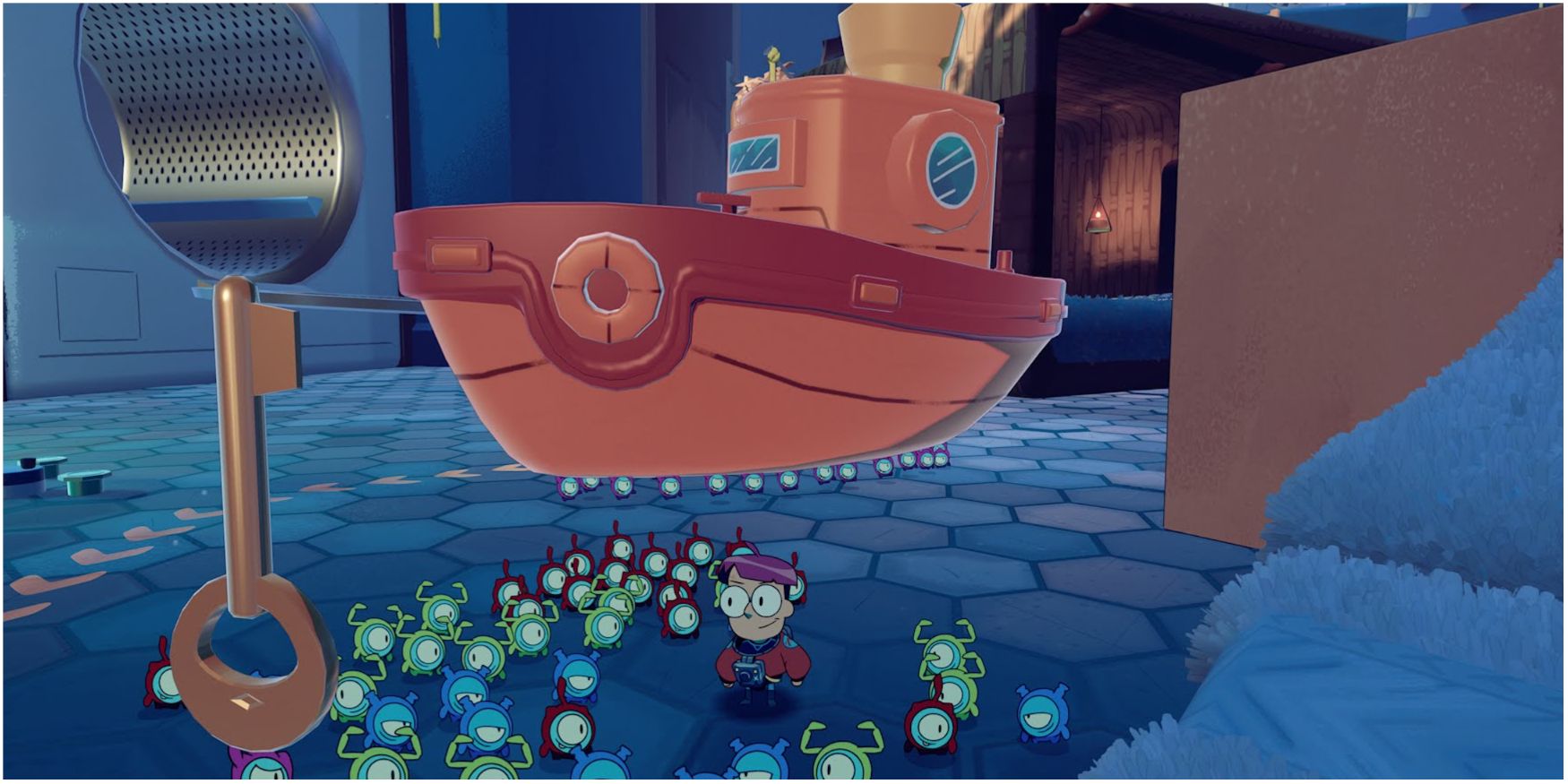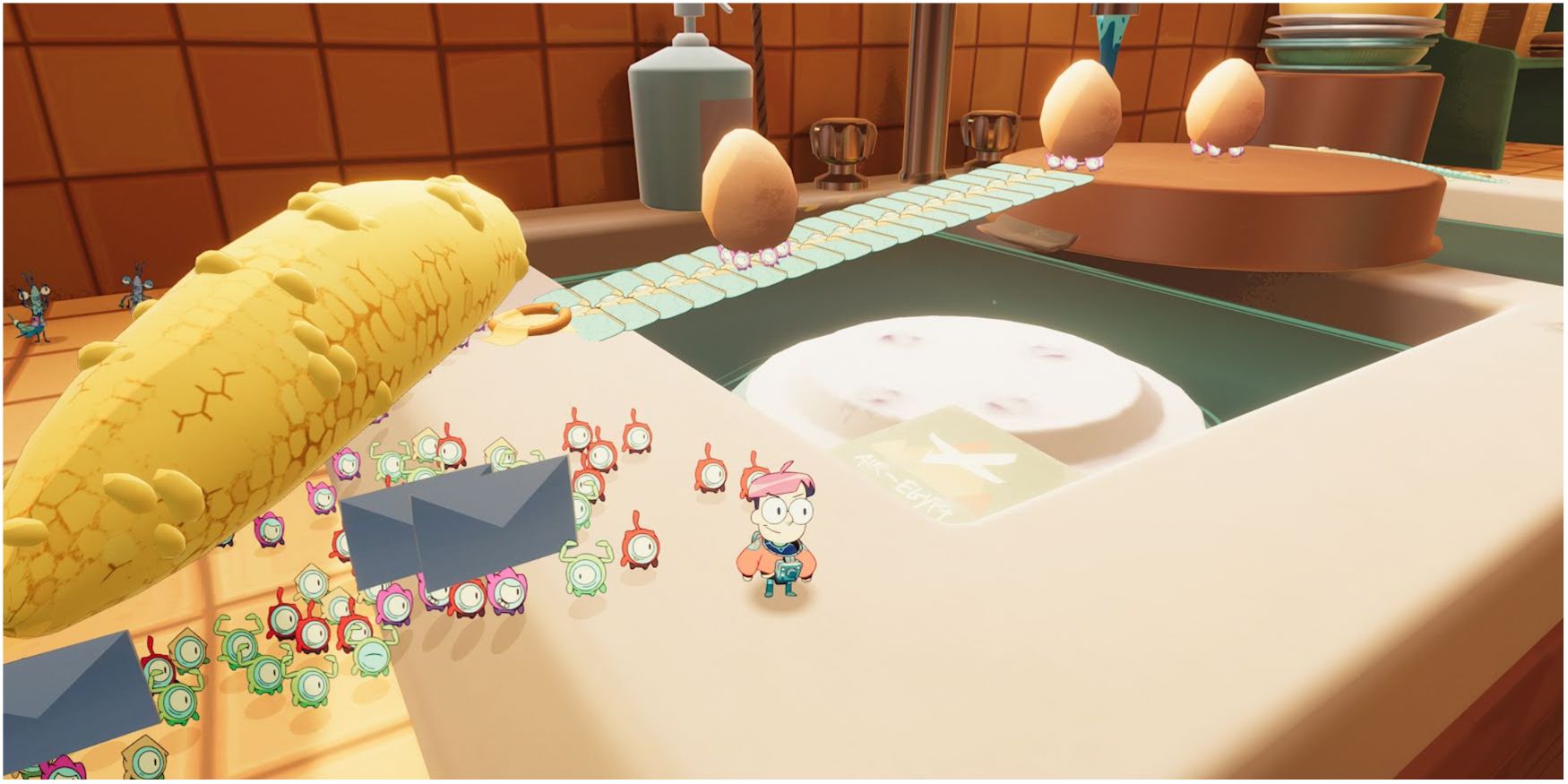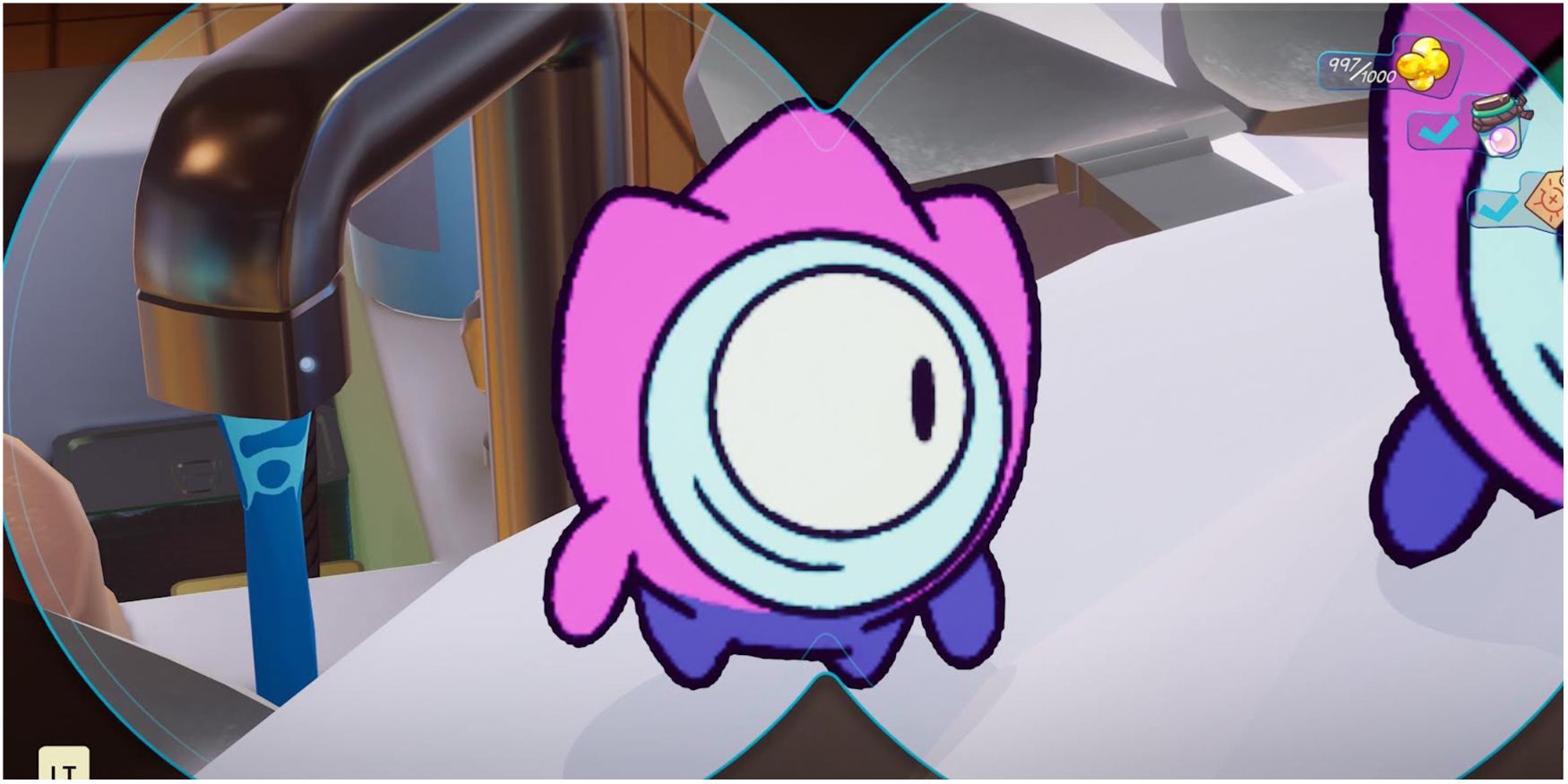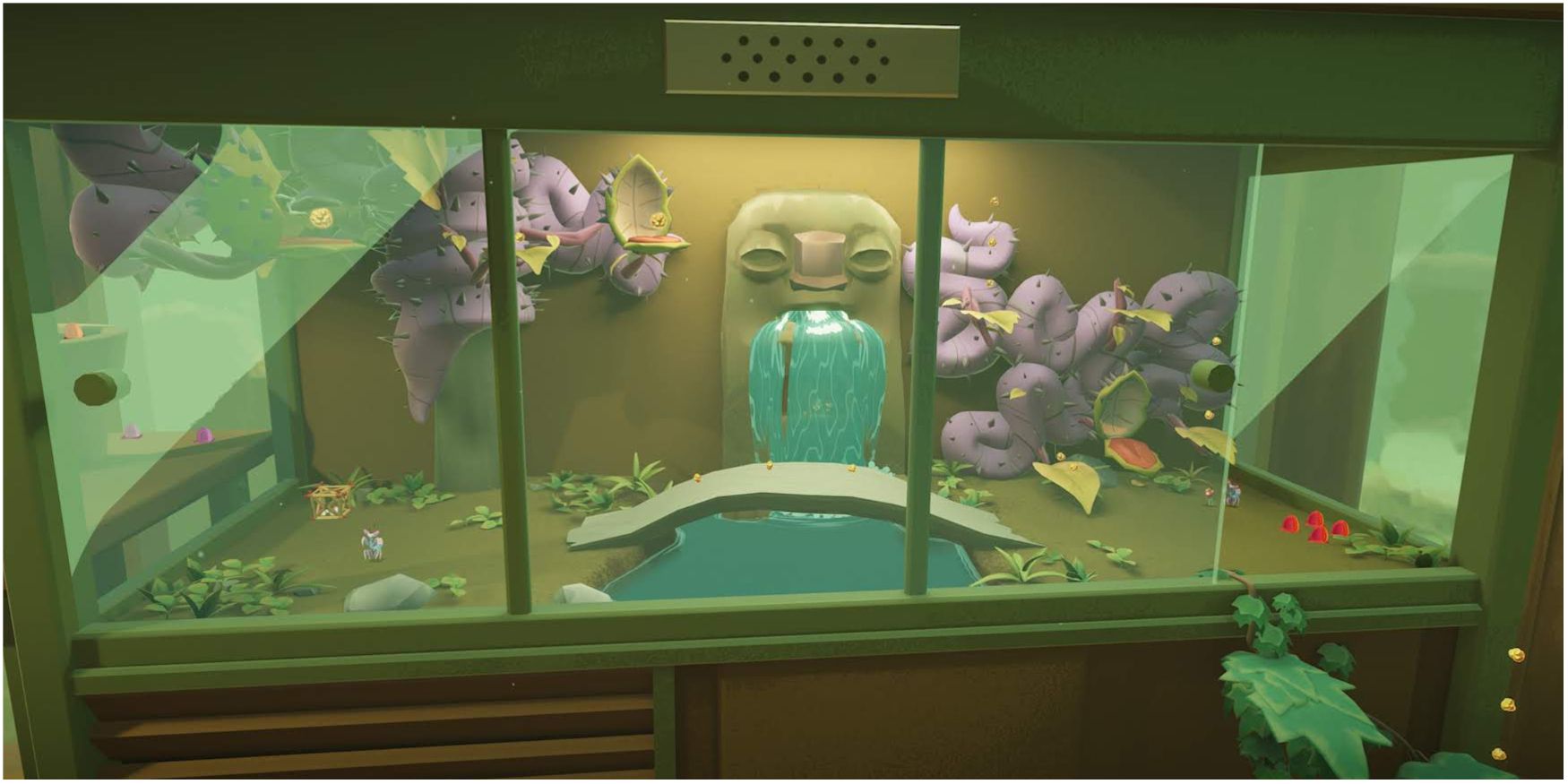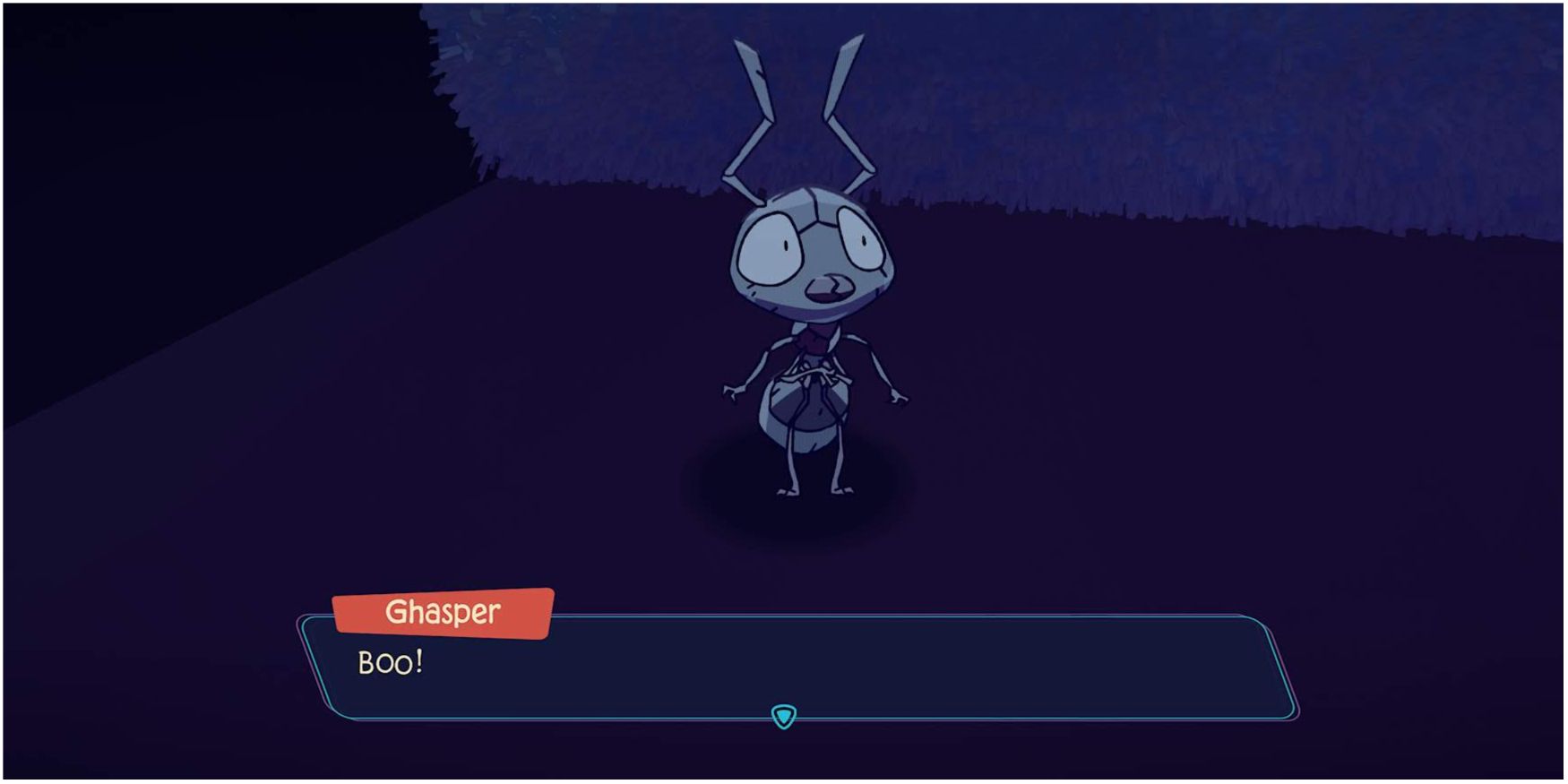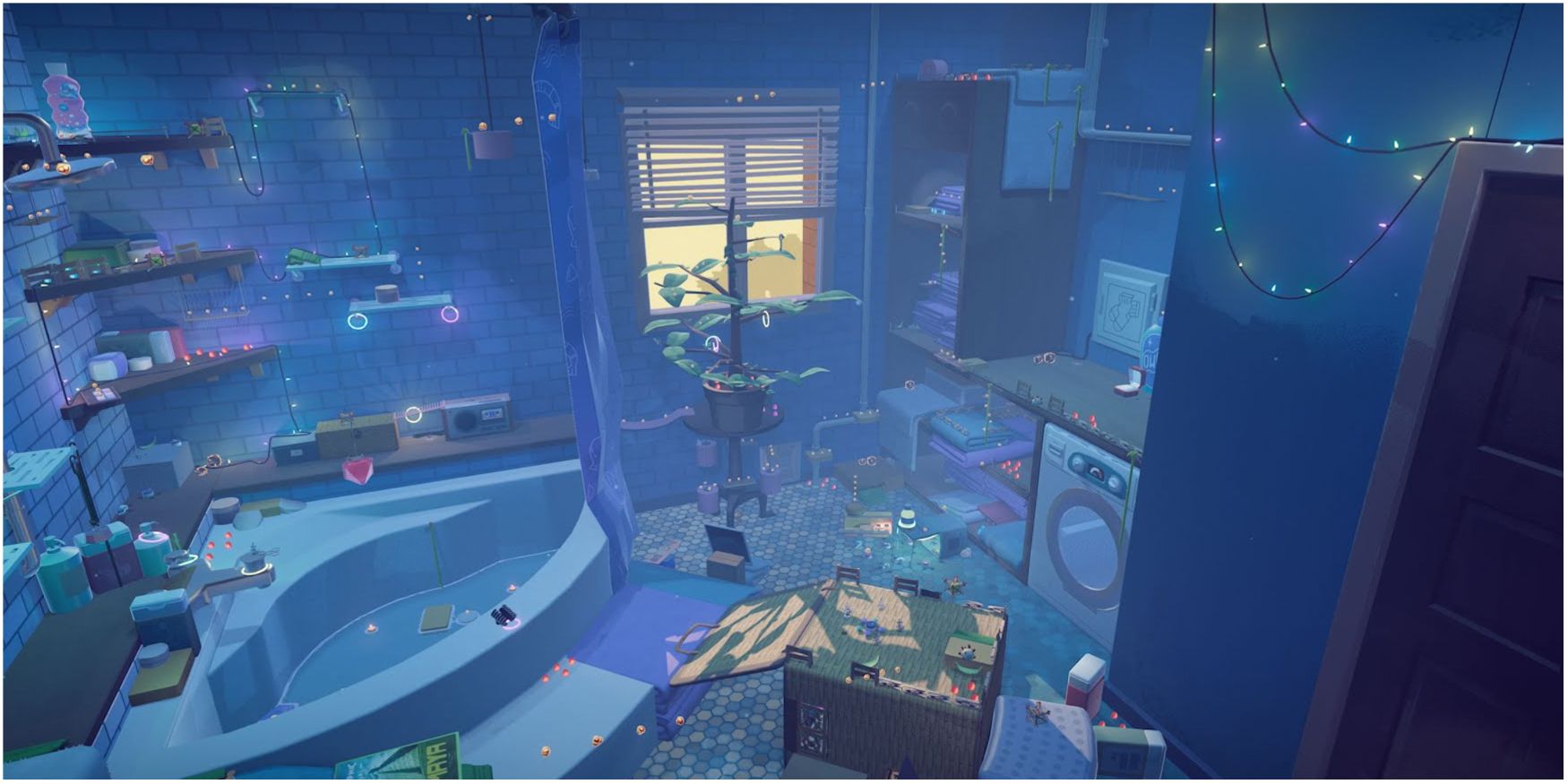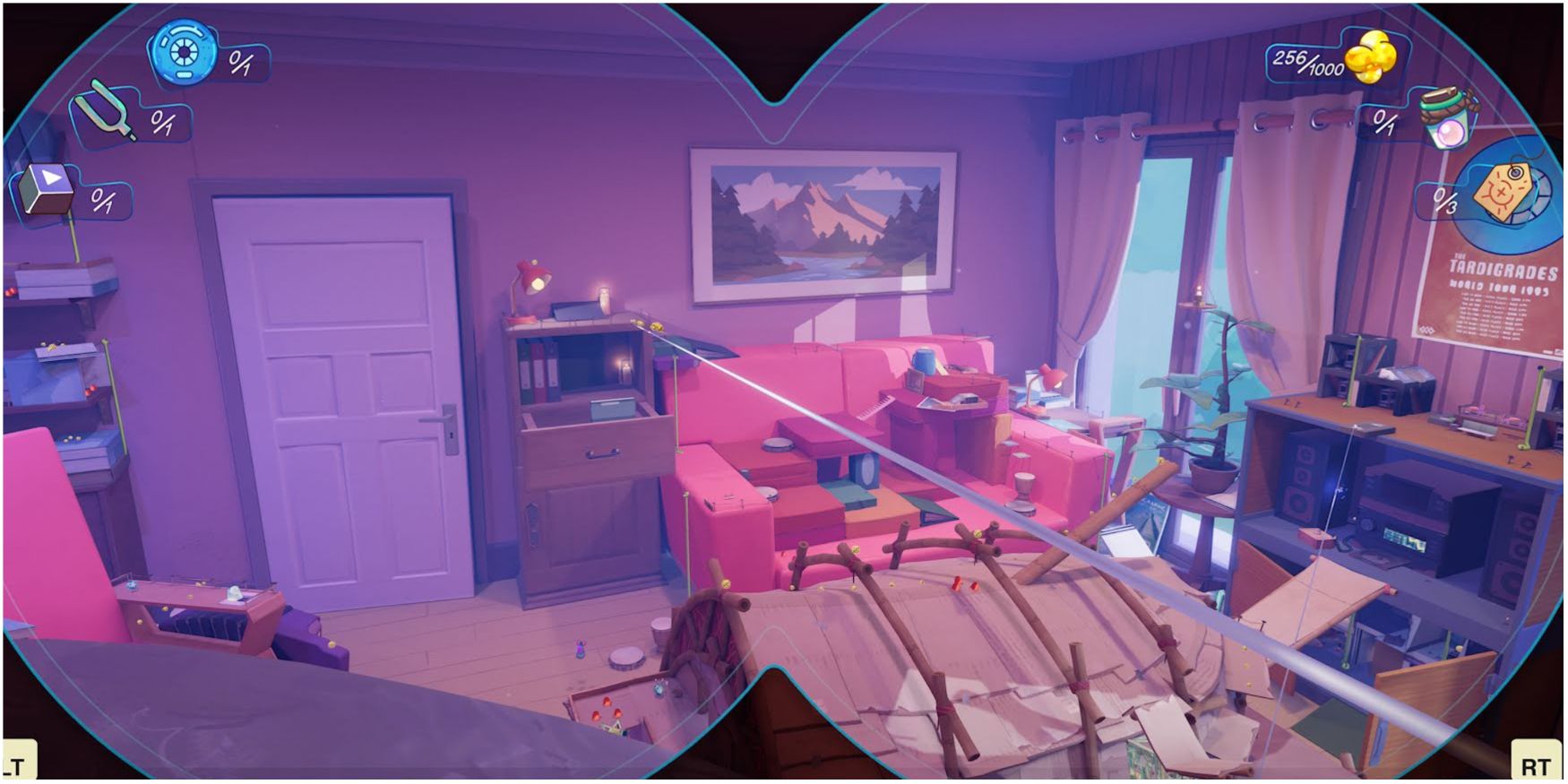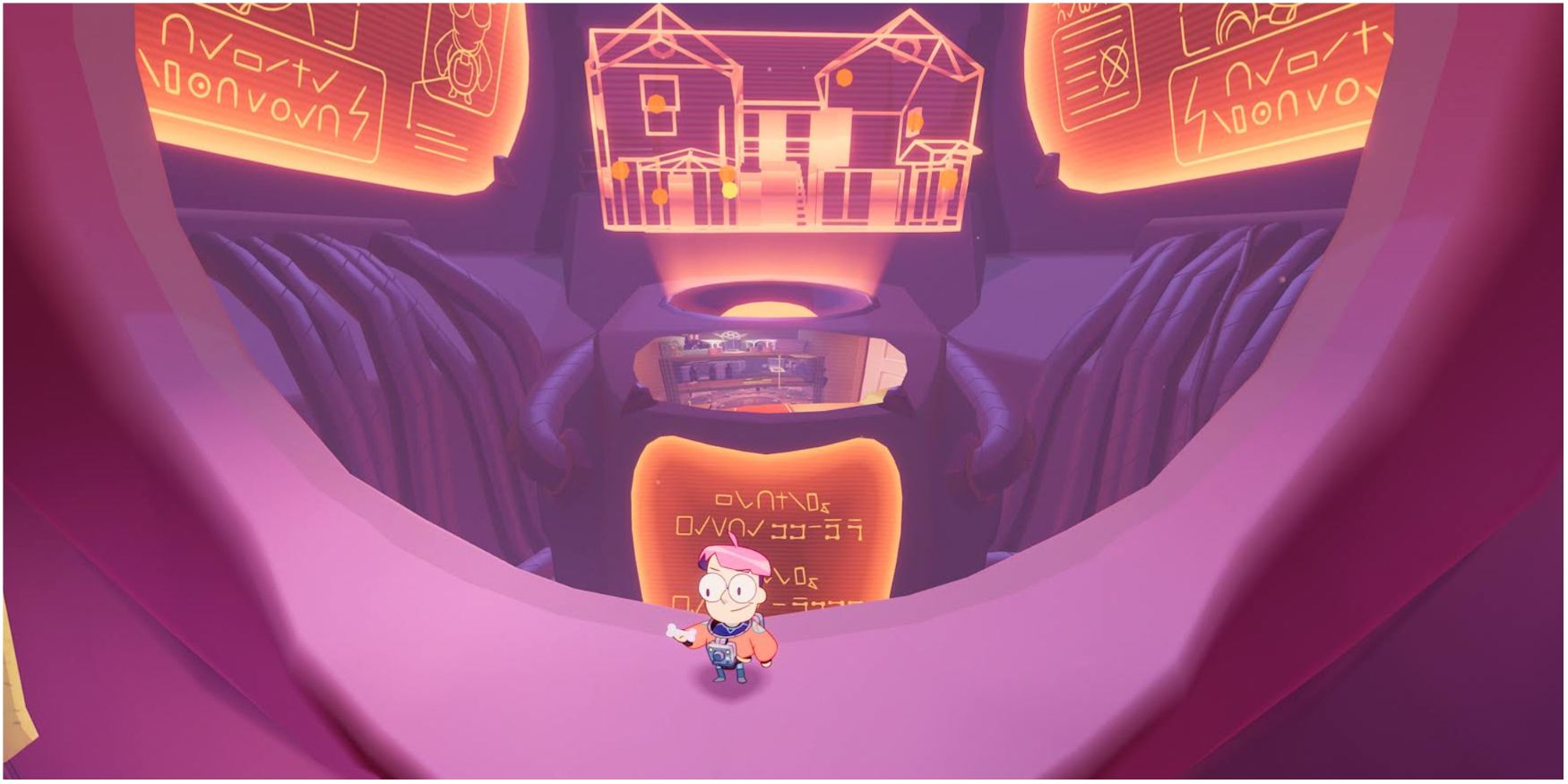Theirs a special mixture of enjoyment and stress reserved for those who have played Nintendo’s Pikmin. Not many games have attempted its gameplay, but it seems Splashteam are fans — creating Tinykin, a Pikmin-esque platformer.
You navigate Milo, a button-sized spaceman, around the interior of an earthly house. No sooner are you getting your bearings than you’re introduced to your mission: Fix a strange machine. Luckily, the Tinykin can help – teensy organisms that have different aiding abilities depending on their look. Tinykin is a platformer full of vibrancy, mystery, and satisfying gameplay, but here are some things that could push the game to even greater heights.
8 Adding Enemies
You’re probably going to notice the vast comparisons being drawn between this game and Pikmin throughout the read. That’s because it tries so brazenly to capture Pikmin on its own terms. Whilst it does a good job treading down a familiar Pikmin path, the absence of enemies in Tinykin is noticeable.
With the exception of environmental dangers, no enemies will try to kill you or your little Tinykin buddies. This type of game would have excelled at combat scenarios, especially considering the variety of Tinykin. Having little to no threats at all, whilst being very accessible to younger players, diminishes the stakes dramatically – leading to one of the biggest things that should have been looked at...
7 It Could Have Been More Difficult
Now, video games don’t need to be difficult to be fun. But having some form of tangible obstacle or introducing sections that make you think carefully does add to an experience. Tinykin leans too far on being too easy, which is polarizing to its Pikmin love-lettering.
If Milo falls from a great height or touches water, they die, but are instantly recovered without any consequence. Those looking for even a slither of a challenge in Tinykin will be disappointed in its sacrifice of difficulty in order to appeal to a wider audience. Just making the world a little more hostile would have solved this issue and combated an otherwise shallow area of the game.
6 Make Tinykin Vulnerable
Those who have played Pikmin need no reminder of how heart-crushing it is when you let one die. Those games require careful management and maneuvering for your little army to survive. Here, the Tinykin are invincible and will never be in any danger.
You never actually control them outright, and they always follow you loyally – traversing great distances like magic to be right by your side. Again, removing the mortality of the Tinykin removes any form of challenge. If the Tinykin had to look to Milo for safety a bit more, this would improve the bond between them, adding value to the times when you need to use them.
5 The Expedition Timer Could Have Played More Of A Role
Whenever you pause the game, you’ll notice an expedition timer counting up. Even pausing doesn’t stop this timer, and it counts the overall time you’ve spent in the game. This clock doesn’t affect anything in the game, and begs the question of why is it there.
Sure, the likes of speedrunners could use it as a nifty in-game timer, but it would have been cool to see it make an in-world difference. The original Pikmin gave you thirty in-game days to complete it, for a narrative purpose. Tinykin’s timer just looks out of place, and needs the same level of narrative hook to warrant its inclusion.
4 Variety In The Side Ventures
Outside the main objectives of each area, you can come across insect characters who have side missions. These range from returning toy animals to a toy zoo to navigating deadly pipes to retrieve a ring. Whilst these side quests are novel distractions, they don’t quite ever feel necessary.
The aforementioned ring retrieval mission is recycled in every area, and all the side ventures equate to feeling a bit samey – gifting you a collectible for completing them. However, if they meant something a bit more, or perhaps if there were more of them to seek out, it could have enriched the overall experience.
3 Even More Unique Environments
Traversing a house as a tiny entity is rarely boring. The same can be said for Tinykin, with each section of the game belonging to a different room in the house; themed in an interesting way. It’s a tonne of fun to navigate and explore, but a lot of the areas recycle the same platforming assets.
You’ll grow used to climbing drawers, plants, and shelves, which are staples of any household, but no less repetitive. If the ways in which you traversed this environment were spiced with variety, it could have made every section unique. A game that does this exceedingly well is It Takes Two.
2 Upgrades To The Binocular Goggles
One of the gadgets that Milo can use to help get his bearings is the binocular goggles. Pulling these from your inventory allows you to scope out the level and seek out glowing interactives. Collectible upgrades for these would have been a major boon.
For example, the binoculars could gain the ability to show hints of where any remaining collectible pollen is hiding. There's an awful lot of pollen to collect in the game that completionists will hone in on, and it works the same way as music note collecting in Banjo-Kazooie games. When you’re one or two pollen short, there's no discernible way to know where to look. Hence why a binocular upgrade could have improved this.
1 Less Confusing Ending
One of the best things about Tinykin is its sense of mystery. There's a bigger picture happening under the surface, and a lot of storytelling is baked into environmental detail. When it comes to the ending, the story is wrapped up just as mysteriously, but still leaves many questions.
What doesn’t help is how much information is packed into the conclusion. Without giving too much away, you’re introduced to a character the game has been building up, and who also has been undergoing a vague quest that is never quite explained. Perhaps this is lining up a sequel or DLC, which only time will answer.


